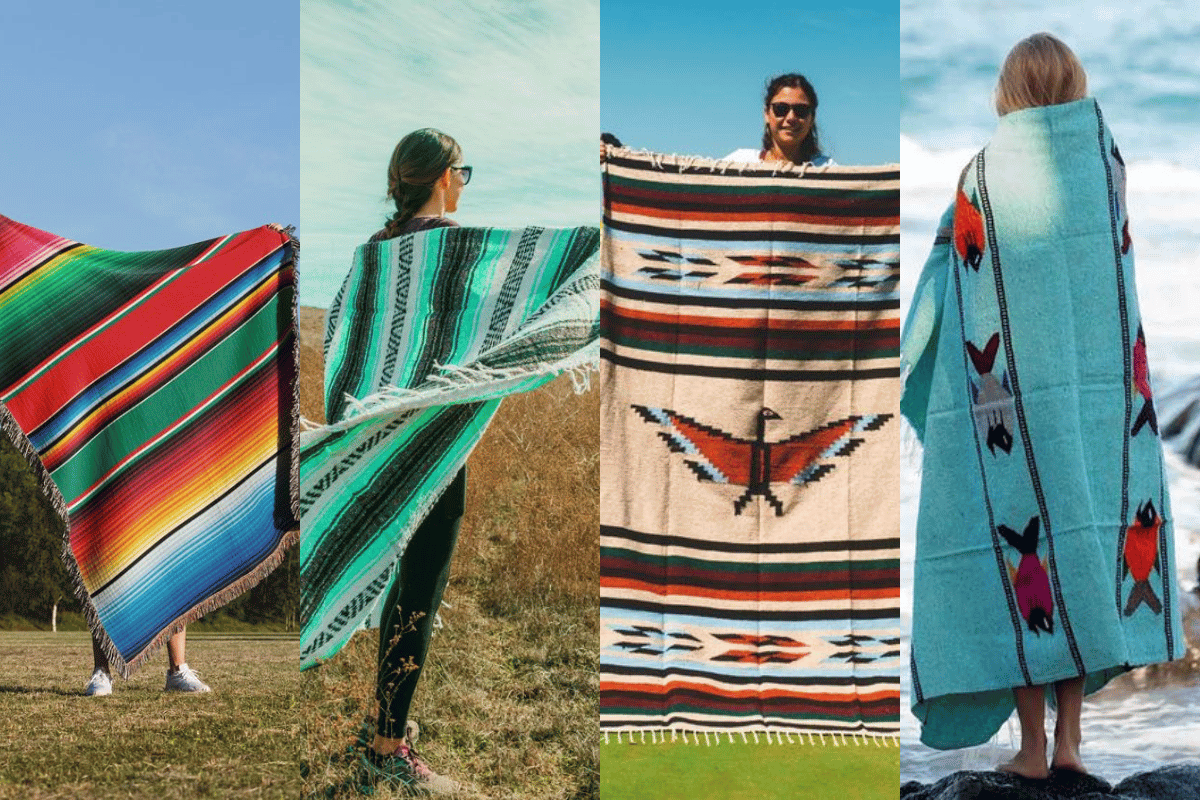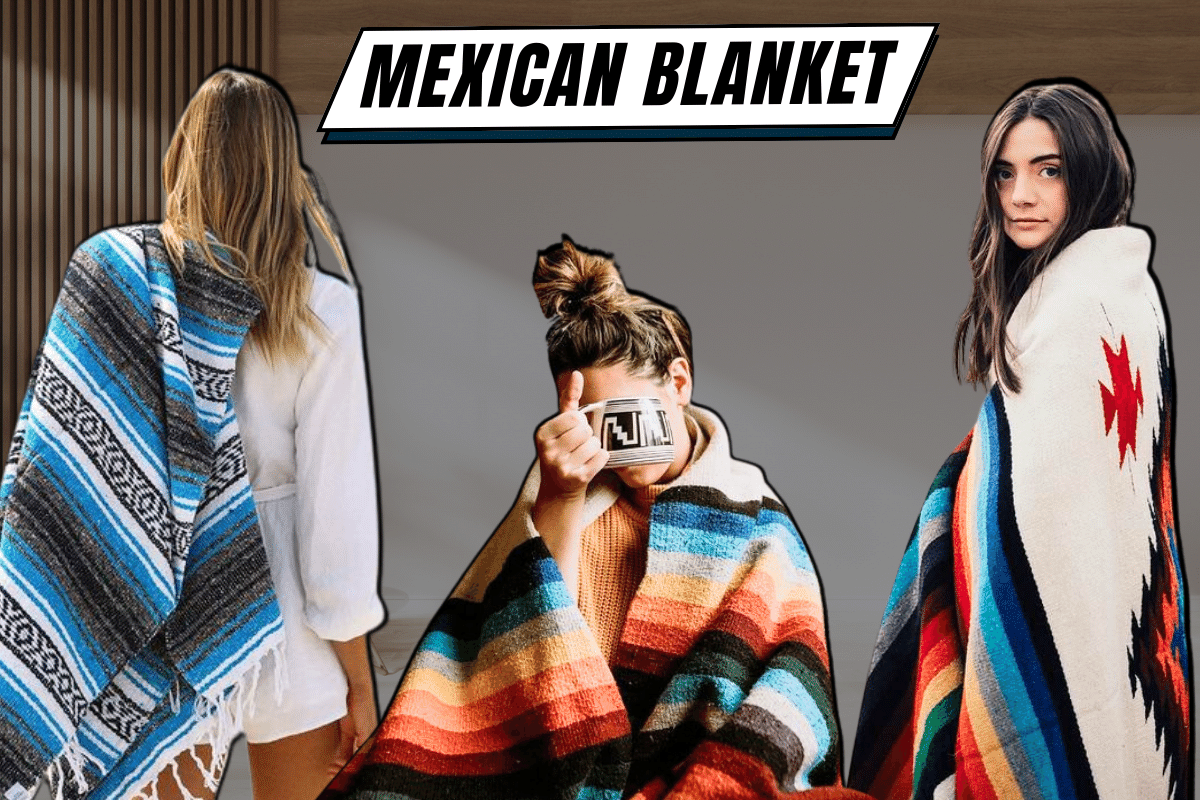Mexican blanket, more than simply coverings, are vibrant canvases woven with history, artistry, and cultural identity. Their vibrant threads tell stories of ancient traditions, diverse weaving techniques, and a deep connection to the land. Whether draped across beds, adorning patios, or providing warmth on chilly nights, these textiles transform ordinary moments into expressions of Mexican heritage. Delving into this world necessitates more than just choosing a pattern; it’s a journey into the soul of Mexico itself.
A Tapestry of Traditions
Tracing the origins of Mexican blankets takes us back millennia, where pre-Hispanic civilizations like the Maya and Aztecs utilized their mastery of weaving to create cotton and maguey fiber textiles. These early versions served practical purposes, providing warmth and shelter, but also held spiritual significance, often adorned with symbolic motifs. Spanish influences arrived in the 16th century, introducing wool and looms, which melded with indigenous techniques, sparking the birth of iconic styles like the Saltillo Serape. This intricate cross-cultural weave is what makes Mexican blankets so unique, each thread whispering tales of both ancient wisdom and colonial adaptation.
A Symphony of Styles
The Mexican blanket landscape is rich in diversity, with each region boasting its own signature style, materials, and weaving techniques. Let’s explore the various types that keep Mexico warm and stylish:

Sarape: The Iconic Stripe Symphony
Undoubtedly the most recognized, the sarape is a rectangular blanket boasting bold stripes in fiery reds, emerald greens, and sunny yellows. Traditionally worn as a shawl by men, it transitioned into a multipurpose blanket, adorning beds, picnics, and even walls. Handwoven on looms, each sarape is unique, whispering tales of the artisan’s hand and heart.
Falsa: The Humble Yogi’s Companion
Falsa (meaning “false” in Spanish) might appear simple compared to the sarape, but its practicality cannot be underestimated. Longer and thinner than its sibling, the falsa’s open-weave texture makes it breathable and lightweight, perfect for yoga studios and travel. Its natural cotton fibers offer optimal grip and absorption, making it a favorite among yogis.
Thunderbird: A Dance of Geometric Power
Step into a realm of geometry with the thunderbird blanket. These blankets feature striking diamond patterns inspired by the mythical thunderbird, a symbol of strength and protection in various Indigenous cultures. Often woven in black and white, with occasional pops of color, they exude a bold, contemporary vibe.
Saltillo: Luxury Woven in Wool
Saltillo blankets are the aristocrats of the Mexican blanket world. Handwoven with thick, naturally dyed wool, each one is a masterpiece of meticulous craftsmanship. Featuring intricate geometric or floral patterns, often inspired by colonial Baroque architecture, Saltillo blankets are heirlooms meant to be cherished for generations.
Fish Blankets: A Splash of whimsy
For a touch of whimsical charm, look no further than fish blankets. Featuring playful fish motifs interwoven with stripes and geometric patterns, these blankets bring a dose of ocean-inspired magic to any space. Perfect for children’s rooms or beach getaways, they’ll add a touch of lightheartedness to your decor.
Beyond Warmth: Symbolism And Storytelling
Mexican blankets are more than just functional textiles; they are intricate storytellers. Their colors, patterns, and motifs carry deep symbolic meaning, often referencing natural elements, mythical creatures, and religious symbols. The “ojo de Dios” (God’s eye) woven into blankets from Puebla and Oaxaca wards off evil, while the vibrant rooster motifs in Michoacán blankets represent strength and virility. The Zapotec people of Oaxaca tell stories through their geometric patterns, weaving narratives of their history and beliefs into the very fabric of their blankets. Owning and using a Mexican blanket becomes an act of cultural engagement, connecting the user to the stories and traditions woven into its threads.
Choosing Your Woven Companion
With such a vast array of options, navigating the world of Mexican blankets can seem daunting. Consider these factors when making your selection:
Purpose
Are you looking for a lightweight throw, a cozy bedspread, or a dramatic wall hanging? Each style offers unique characteristics to fit various needs.
Region
Explore the different regional styles and their symbolic meanings to find a blanket that resonates with you.
Material
Wool offers warmth and durability, while cotton is lighter and more breathable. Consider your preference and climate.
Price
Prices vary depending on the region, material, and complexity of the weaving. Be prepared to pay more for handmade, intricate pieces.
Caring For Your Treasured Textile
Proper care ensures your Mexican blanket will become a cherished heirloom. Dry-cleaning is recommended for delicate wool pieces, while cotton blankets can be hand-washed with gentle detergent. Avoid harsh detergents and direct sunlight, and store your blanket rolled or loosely folded. Avoiding exposure to direct sunlight for extended periods helps preserve the vibrant colors, preventing fading over time. Regular maintenance, such as gentle brushing or shaking, can help maintain the blanket’s softness and prevent the accumulation of dust or debris.
More Than Just Fabric
Ultimately, owning a Mexican blanket is about more than just acquiring a textile. It’s about embracing a vibrant culture, appreciating ancestral skills, and acknowledging the stories woven into each thread. It’s a reminder that warmth can come not just from physical temperature, but also from the rich tapestry of human tradition and artistic expression. So, explore the diverse world of Mexican blankets, let their colors and patterns speak to you, and find your own woven companion, a piece of Mexico to treasure for generations to come.
